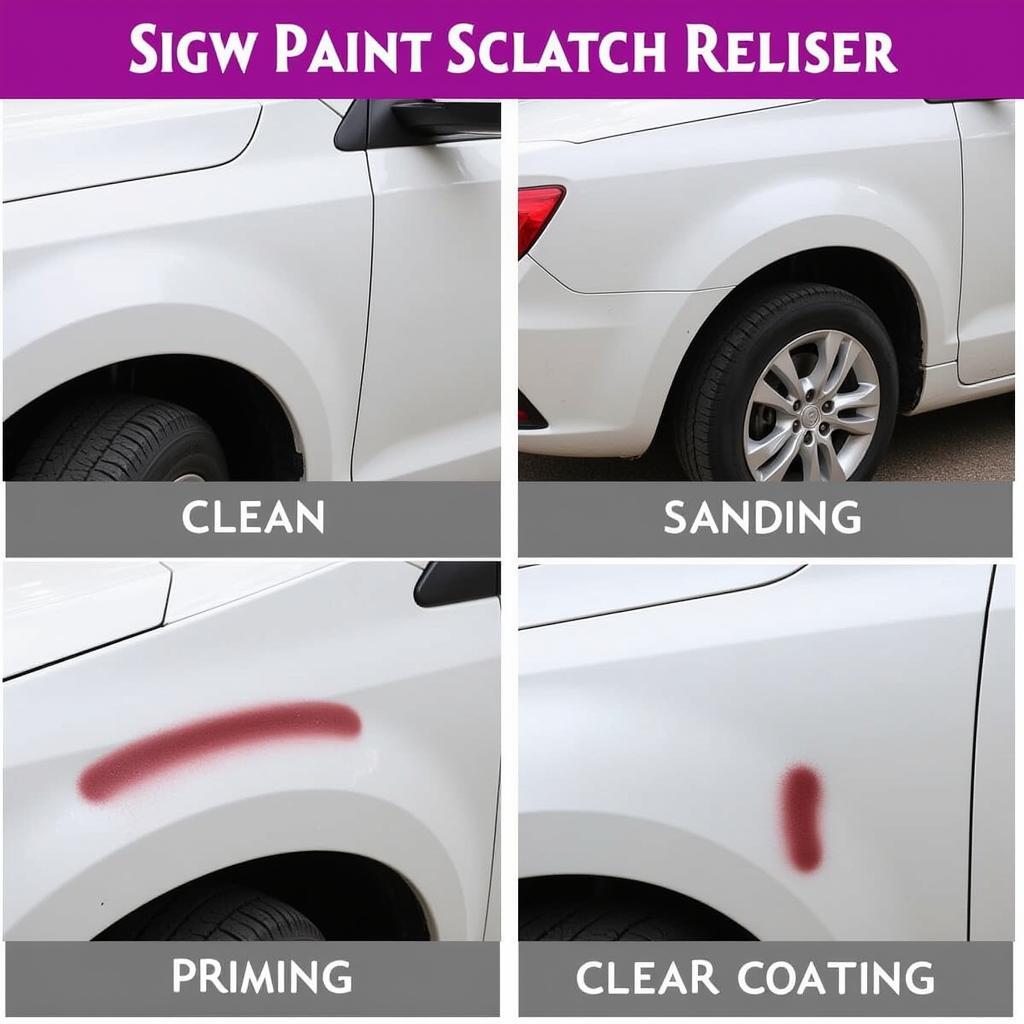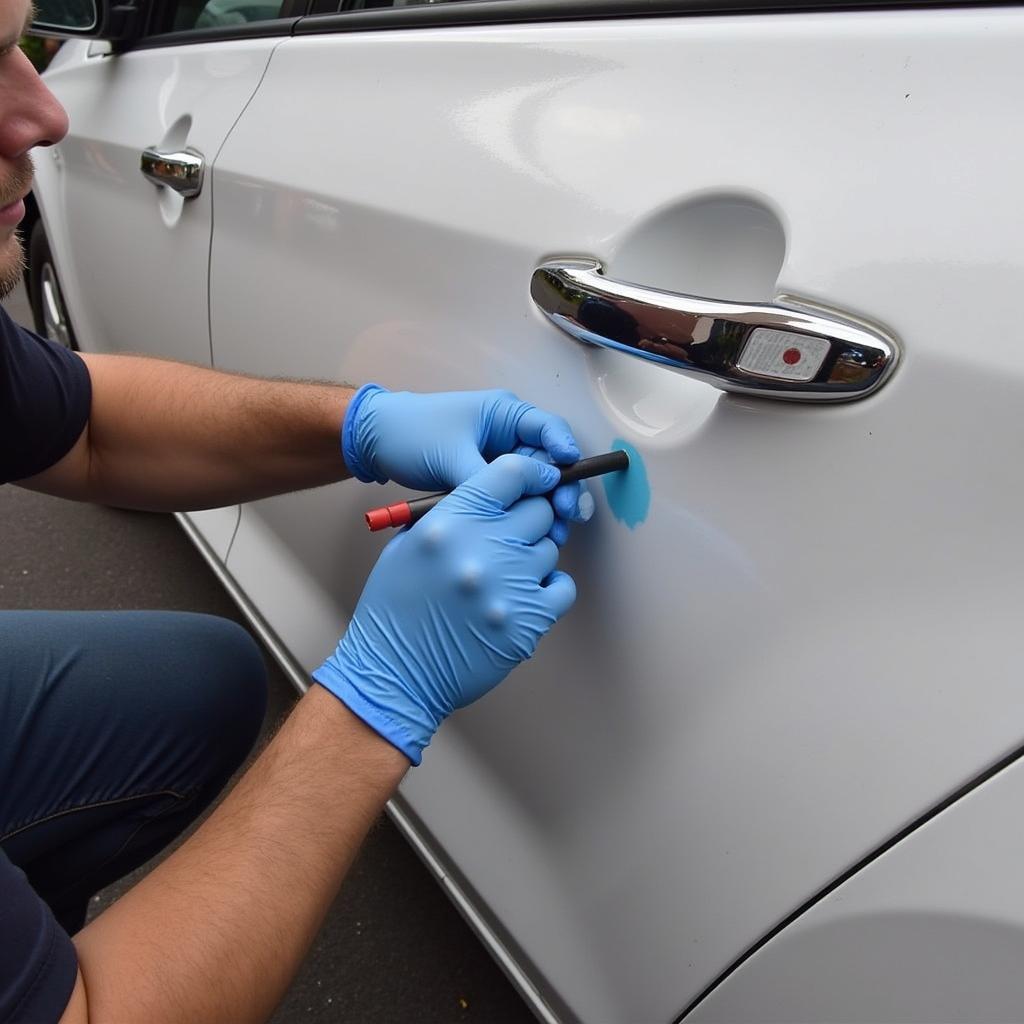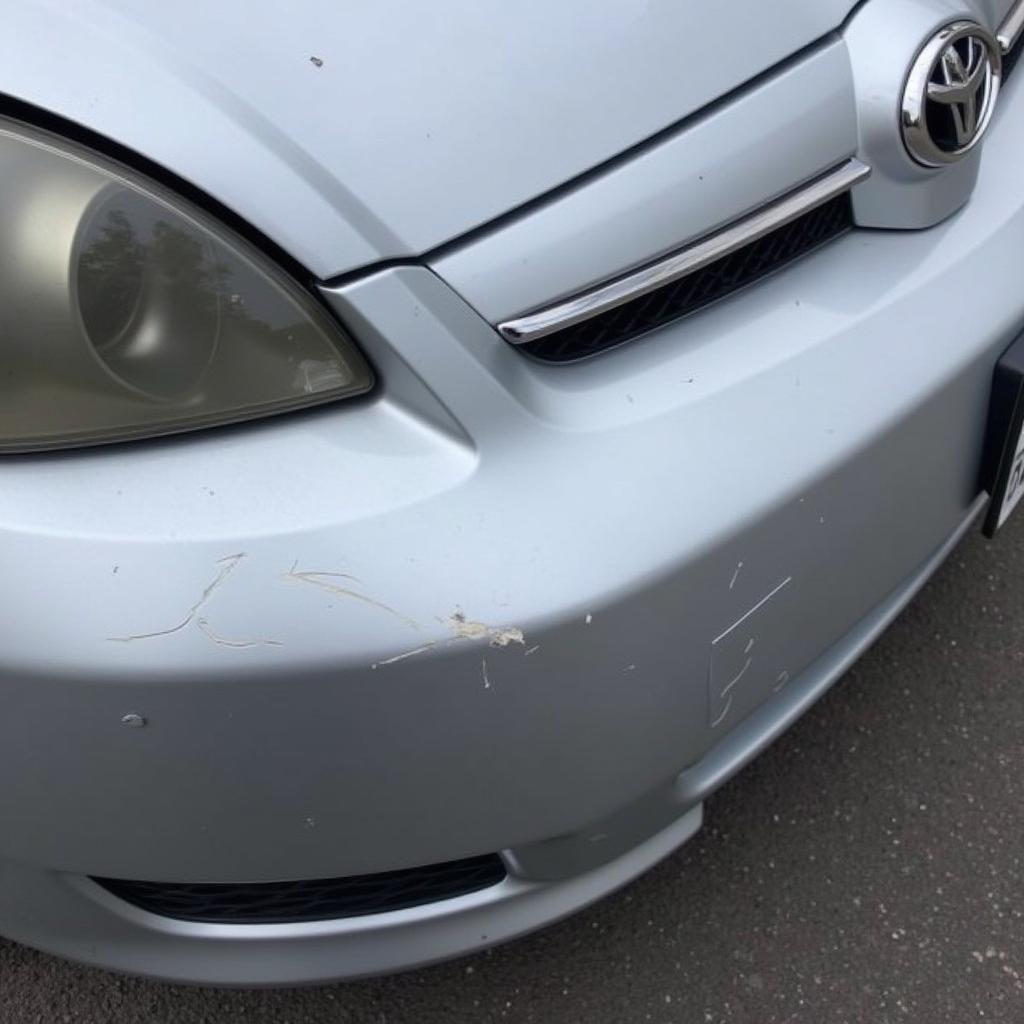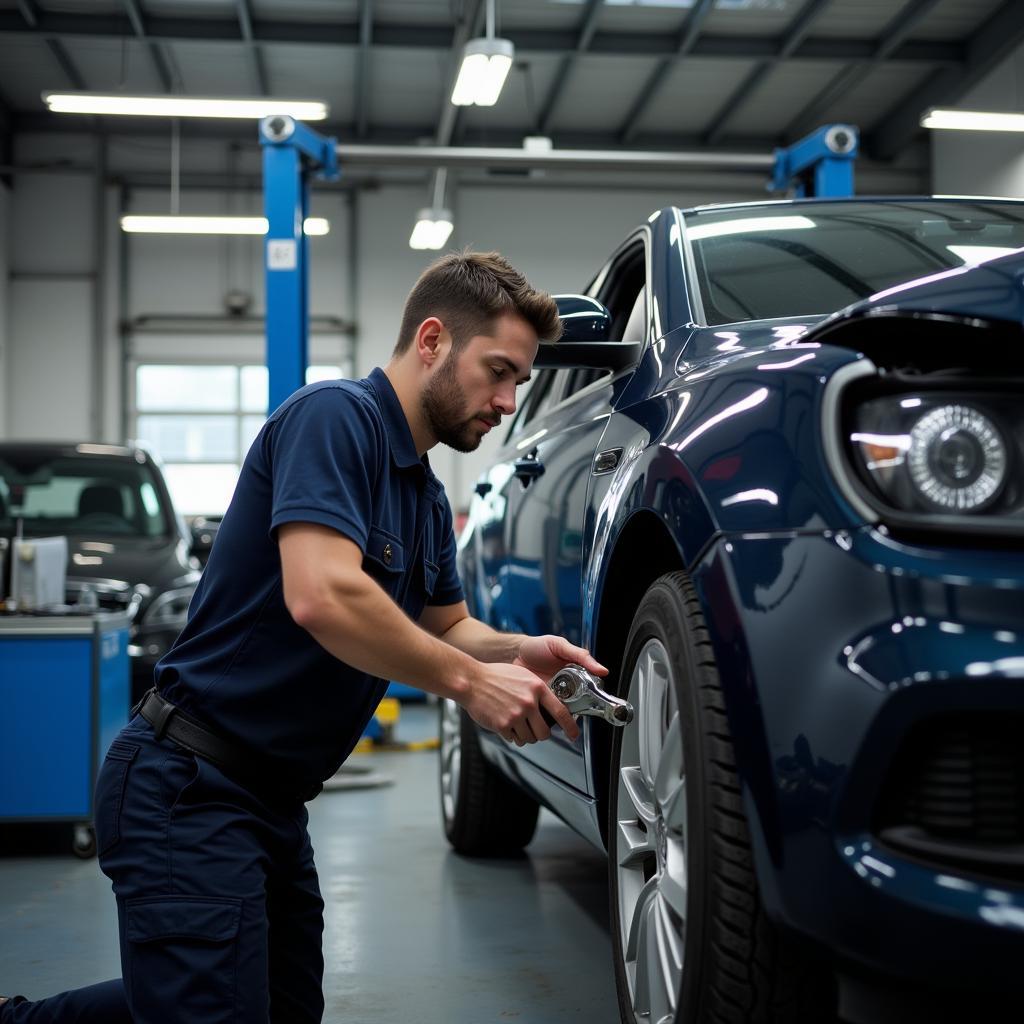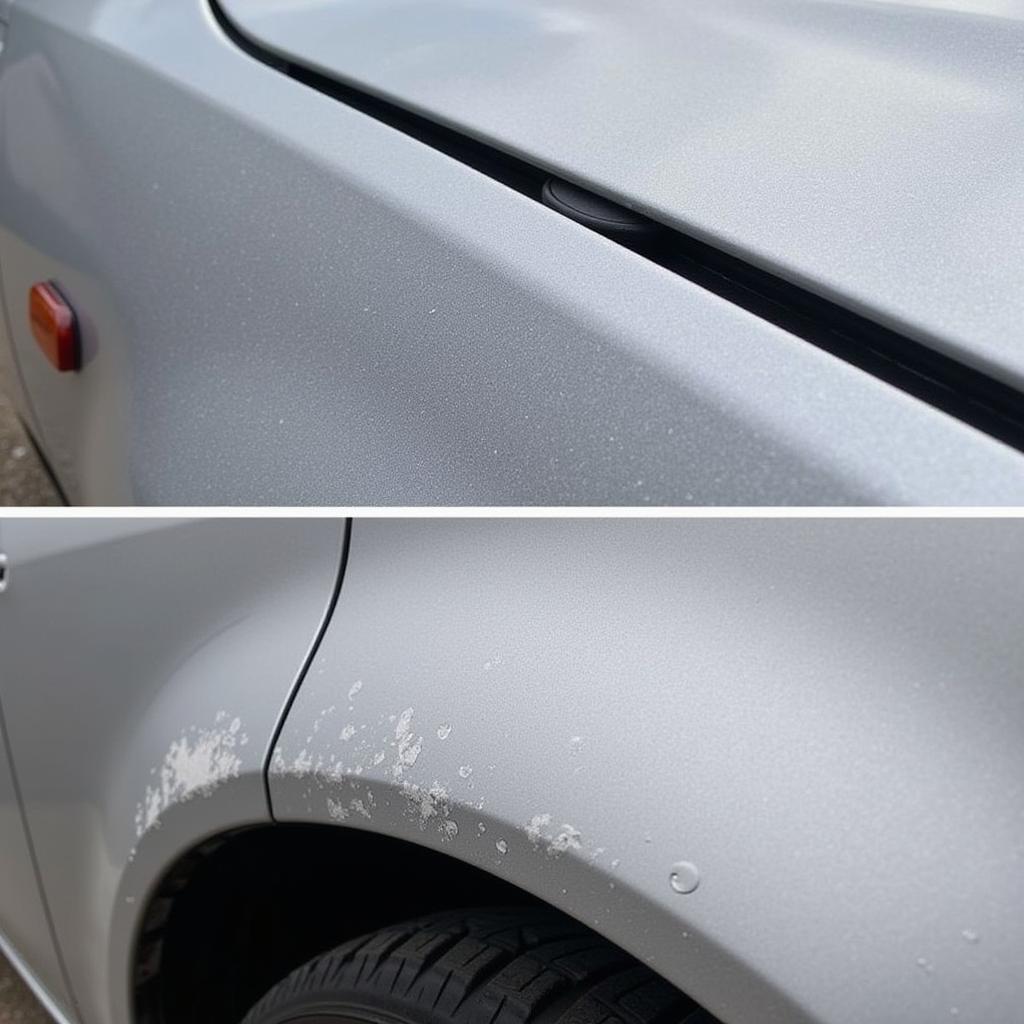
Close-Up of Car Paint Oxidation
Car paint oxidation is a common problem that can make your vehicle look dull and faded. It occurs when the clear coat protecting your car’s paint breaks down due to exposure to the elements, leading to a chalky, faded appearance. While it might seem daunting, learning How To Repair Car Paint Oxidation is achievable with the right tools and techniques. This comprehensive guide will walk you through the steps to restore your car’s shine and protect it from future damage.
 Close-Up of Car Paint Oxidation
Close-Up of Car Paint Oxidation
Understanding Car Paint Oxidation
Before you begin the repair process, it’s crucial to understand what causes car paint oxidation and the level of damage to your vehicle’s paint.
Causes of Car Paint Oxidation
Several factors contribute to car paint oxidation, including:
- UV Rays: Prolonged exposure to the sun’s harmful ultraviolet rays is a leading cause of oxidation.
- Acid Rain: Acid rain, containing harmful pollutants, can eat away at your car’s clear coat.
- Salt and Contaminants: Road salt, bird droppings, tree sap, and industrial fallout can also damage your car’s paint.
- Lack of Maintenance: Infrequent washing and waxing can leave your car’s paint vulnerable to the elements.
Assessing the Damage
The severity of oxidation will determine the best course of action.
- Light Oxidation: Appears as a slight haze or loss of shine.
- Moderate Oxidation: Characterized by a chalky, white residue that can be rubbed off with your finger.
- Severe Oxidation: The paint appears extremely faded and rough, often with cracks or peeling.
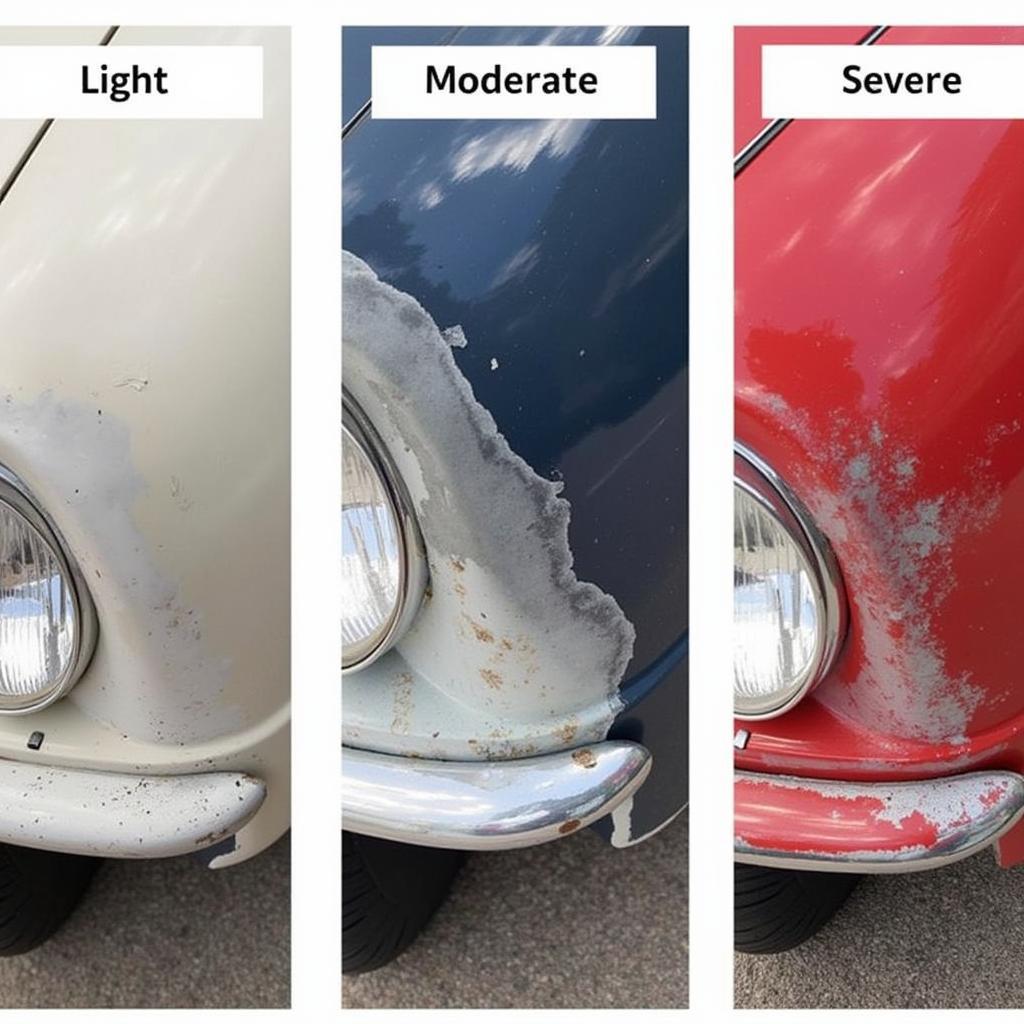 Car Paint Oxidation Stages
Car Paint Oxidation Stages
How to Repair Car Paint Oxidation: A Step-by-Step Guide
For light to moderate oxidation, you can often restore your car’s paint yourself. Here’s how:
1. Wash and Dry Your Car: Use a pH-balanced car wash soap and wash mitt to remove loose dirt and grime. Rinse thoroughly and dry with a microfiber towel.
2. Clay Bar Treatment (If Necessary): A clay bar can remove embedded contaminants that washing alone can’t. Lubricate the surface with a clay bar lubricant and gently glide the clay over the paint.
3. Choose the Right Polish: Select a polishing compound appropriate for the level of oxidation. For light oxidation, a finishing polish may suffice. Moderate oxidation may require a more aggressive cutting compound.
4. Apply Polish with a Dual-Action Polisher: A dual-action polisher provides the best results and minimizes the risk of damaging your paint. Apply a small amount of polish to the pad and work in small sections, using overlapping passes.
5. Remove Polish Residue: Use a clean microfiber cloth to remove the polish residue. Inspect your work in direct sunlight to ensure all oxidation is gone.
6. Apply a Paint Sealant or Wax: This protective layer will shield your car’s paint from future damage. Apply the sealant or wax following the manufacturer’s instructions.
Severe Oxidation Repair
Severe oxidation typically requires professional attention. A professional detailer or auto body shop can assess the damage and recommend the best course of action, which may include:
- Wet Sanding: This aggressive technique removes a thin layer of the clear coat to eliminate deep oxidation.
- Repainting: In extreme cases, repainting the affected panels might be necessary to restore the vehicle’s appearance.
Preventing Car Paint Oxidation
Preventing oxidation is easier and more cost-effective than repairing it. Follow these tips to protect your car’s paint:
- Regular Washing and Waxing: Wash your car every two weeks and apply a coat of wax every three months.
- Park in the Shade: Whenever possible, park your car in a garage or under a shaded area.
- Use a Car Cover: A car cover provides an extra layer of protection against UV rays, dirt, and debris.
- Address Paint Chips Promptly: Touch up paint chips as soon as possible to prevent oxidation from spreading.
Expert Insight
“Many car owners underestimate the importance of regular car washes and waxing,” says John Smith, a veteran auto detailer with over 20 years of experience. “These simple steps can significantly prolong the life of your car’s paint and prevent costly repairs down the line.”
Conclusion
Learning how to repair car paint oxidation empowers you to maintain your vehicle’s appearance and value. By following the steps outlined in this guide, you can restore your car’s shine and protect it from future damage. Remember, regular maintenance is key to preventing oxidation and keeping your car looking its best.
Frequently Asked Questions (FAQ)
Can I use household cleaners to remove car paint oxidation?
Using household cleaners on your car’s paint is not recommended as they can strip away the protective clear coat, leading to further damage.
How often should I polish my car?
Polishing your car twice a year is generally sufficient for most vehicles. However, if you live in a harsh climate, you may need to polish more frequently.
Can I wet sand my car’s paint myself?
Wet sanding is a technique best left to professionals. It requires specialized tools and knowledge to avoid damaging the paint.
What is the best type of car wax to use?
There are many types of car wax available, including carnauba wax, synthetic wax, and paint sealant. The best type for your car depends on your budget, desired level of protection, and personal preference.
How can I tell if my car needs a new clear coat?
If the paint feels rough to the touch, appears extremely faded, or has visible cracks, your car may need a new clear coat.
Need More Help?
Have more questions about car paint oxidation or other car repair issues?
- Check out our comprehensive guide on car paint oxidation repair cost to understand the factors that influence pricing.
- Learn more about car paint flake repair in our detailed article.
- For professional car paint repair services, contact car paint repair co ltd.
You can also explore these related topics:
Get expert advice and assistance with all your car repair needs! Contact us via WhatsApp: +1(641)206-8880, Email: [email protected]. Our dedicated customer support team is available 24/7 to assist you.

